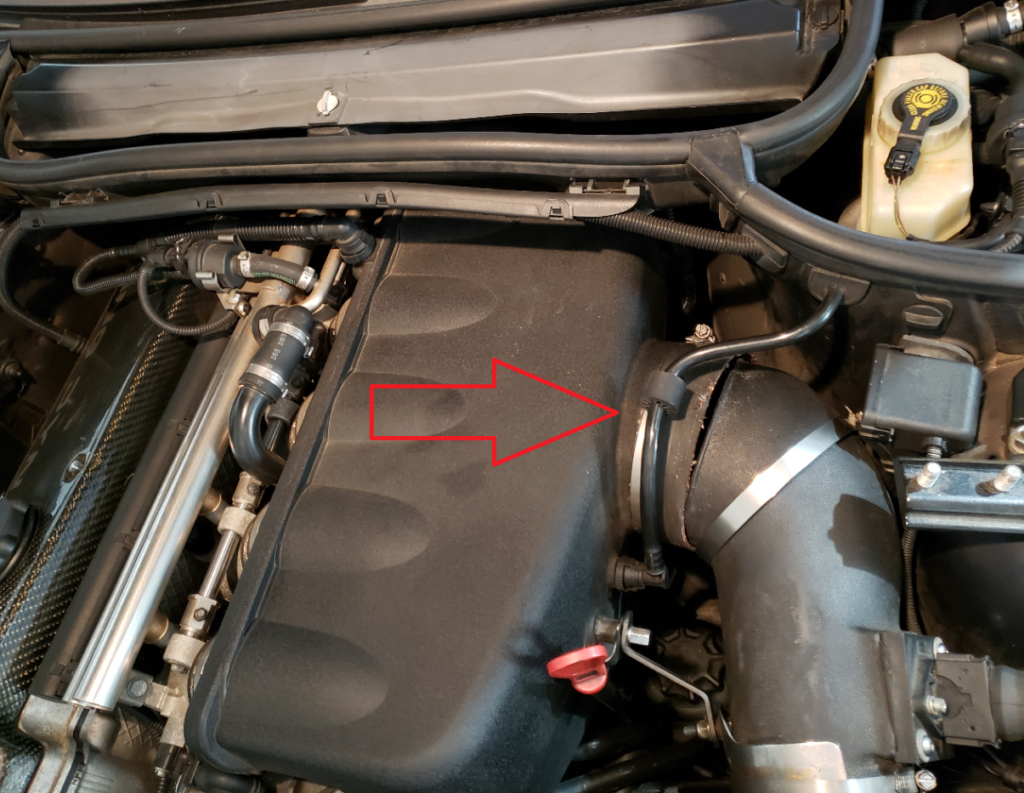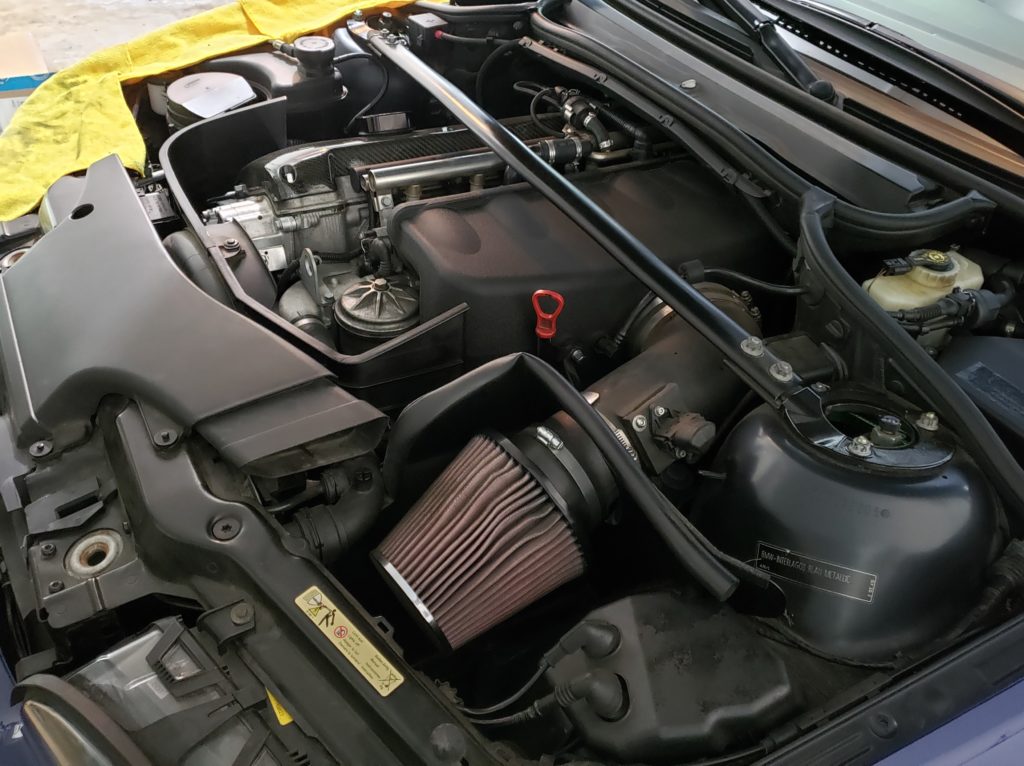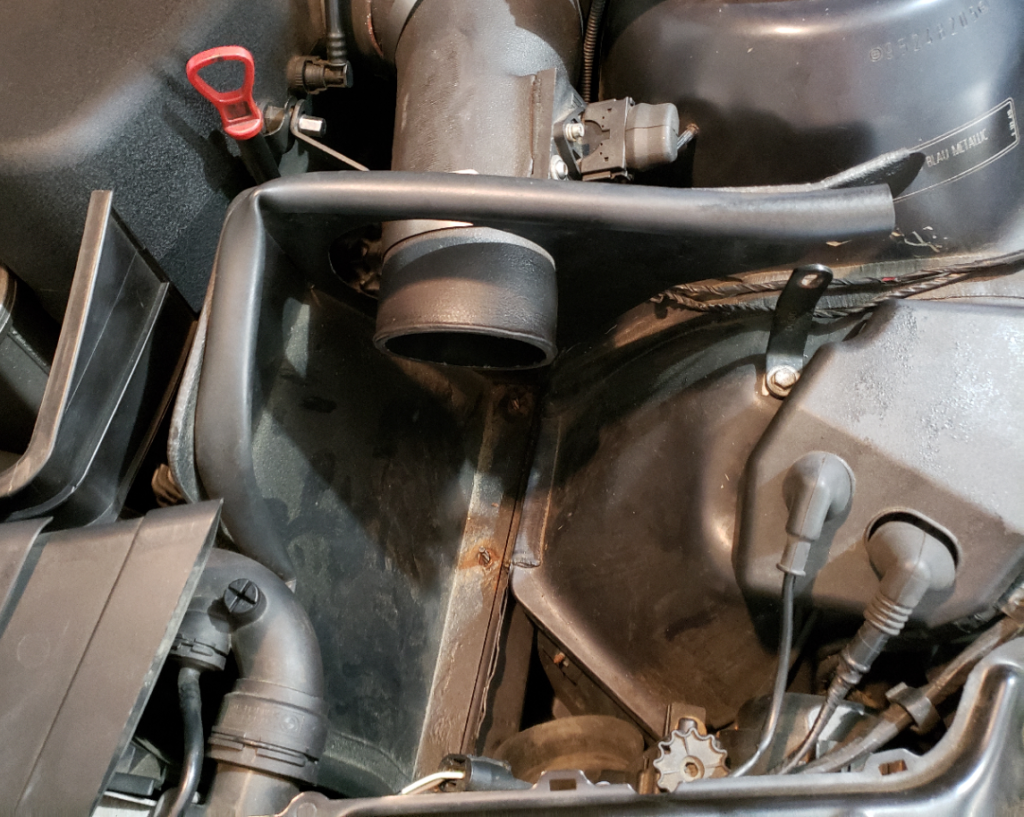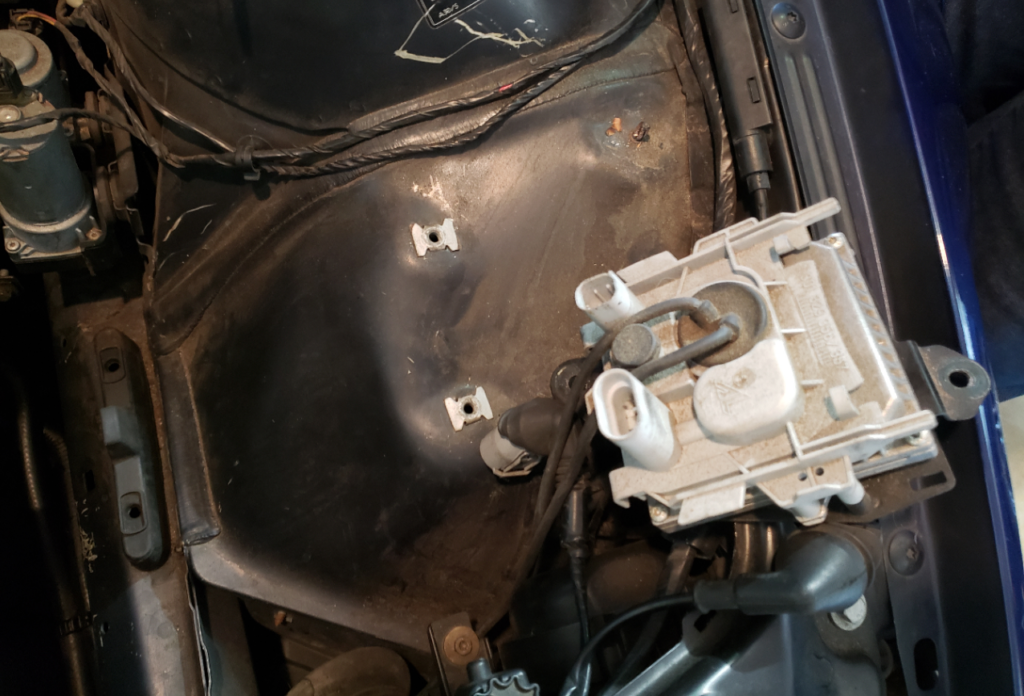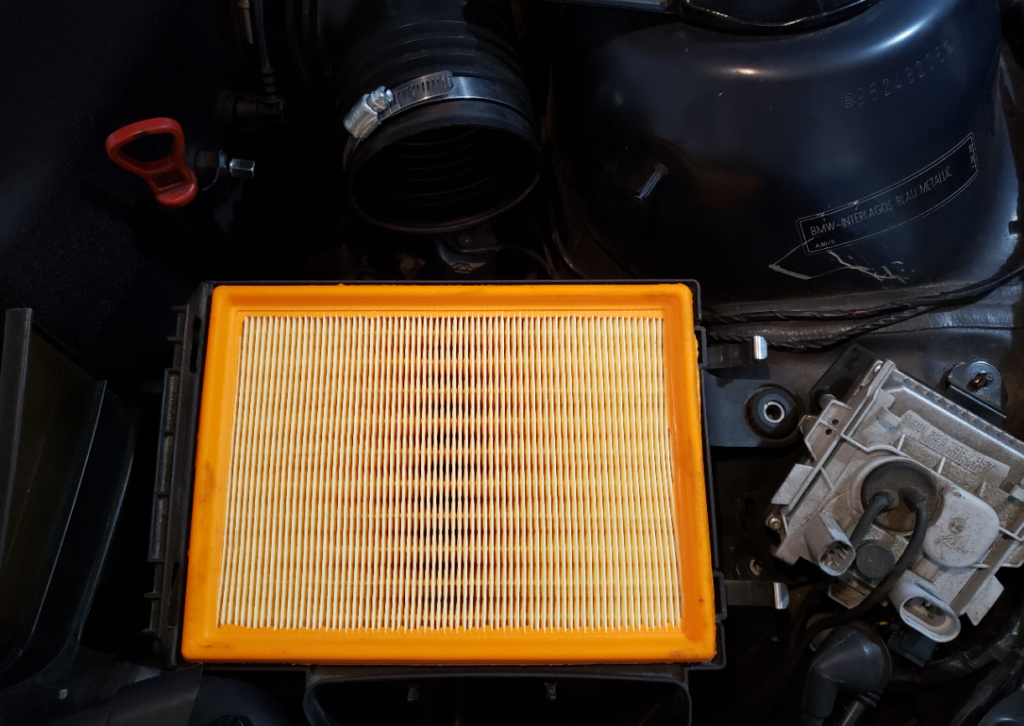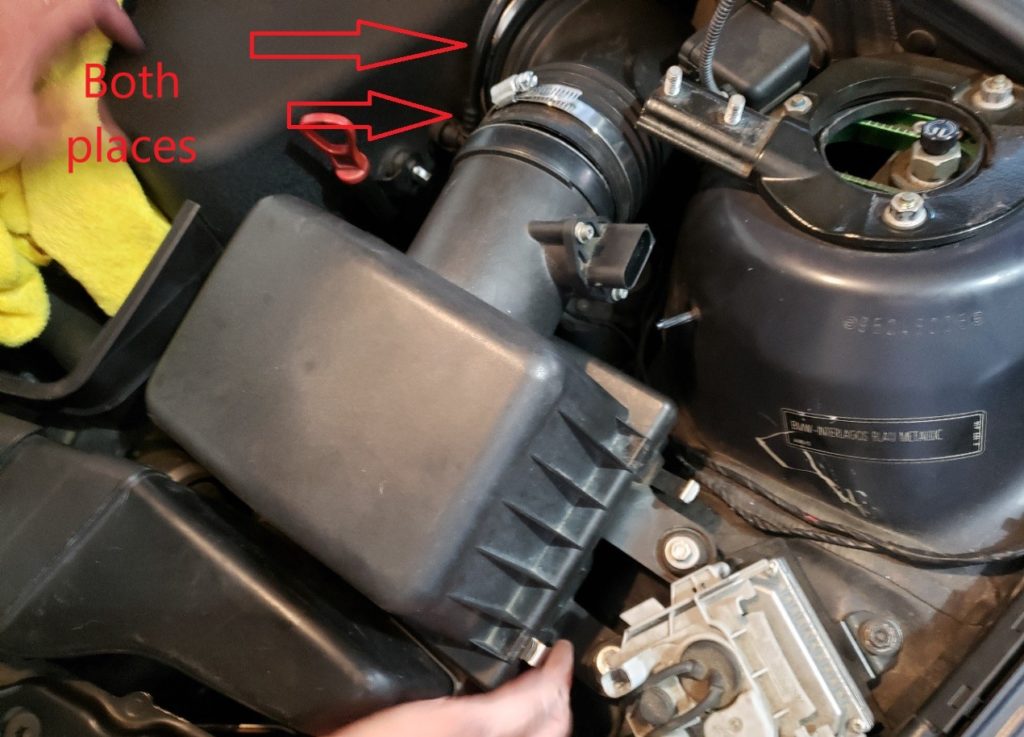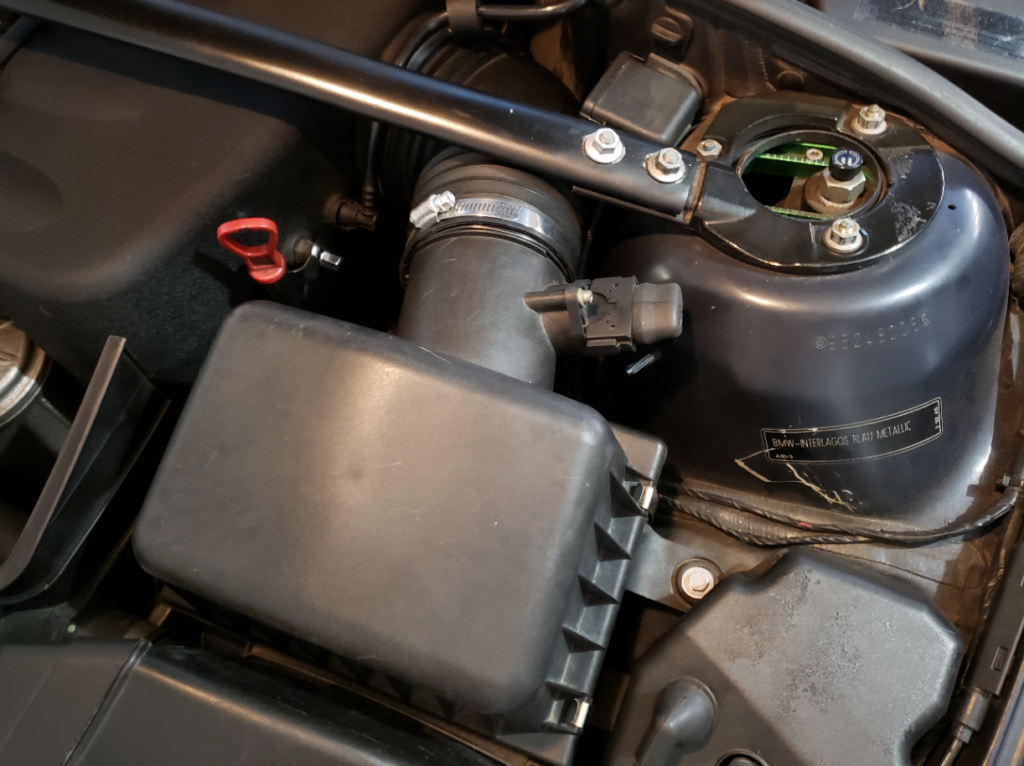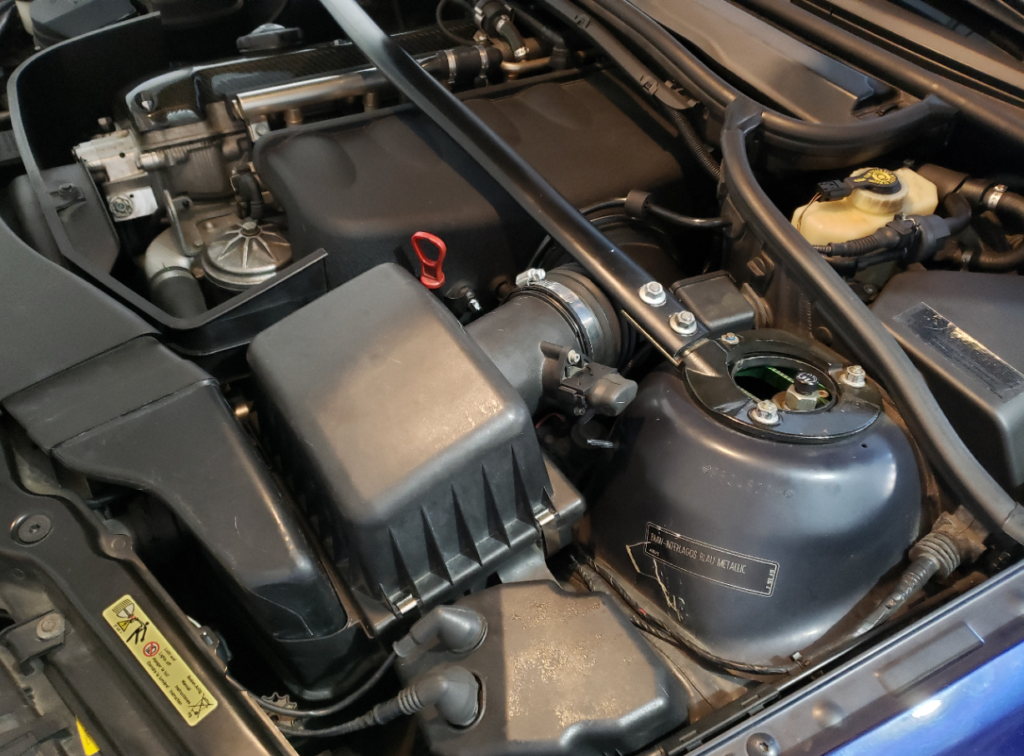
Over the Thanksgiving holiday I installed a stock air intake in my 2006 BMW E46 M3. When I bought the car in 2014 it came with an aftermarket cold air intake (CAI).
Replacing the CAI had been on my project list for a while. The CAI name is a misnomer – most of them become “hot” air intakes because the filter sits exposed in the engine bay. The consensus is that unless you want to spend thousands of dollars, the stock air box is hard to improve upon. Exhaustive detail here from M3Forum if you’d like more info.
I was going to wait for spring but then the CAI upped the urgency. It started separating from the side of the intake manifold, disrupting the flow of air into the engine. This caused the car to stall every time it came to a stop. Fortunately I wasn’t far from home and made it back.
I put back in and tightened the clamp but the boot would not stay. So with the car undriveable I decided to install a stock airbox immediately.
The E46 M3 stock airbox is just a square box made of plastic, so there was no need to pay big money for a brand new one. I found a good condition used airbox with all the pieces required for $175 on eBay. It came with a filter but I bought a brand new clean one.
It also came with a used Mass Air Flow (MAF) sensor, which is the electronic component that senses the correct air/fuel fixture. I didn’t use that, I transferred over my current sensor after giving it a thorough cleaning. I also bought new rubber gaskets for both sides of the airbox connection points.
Once I had all the parts I simply needed to remove the CAI and install the stock airbox. Of course nothing is truly simple with BMWs. The HID igniter needed to be temporarily removed and set aside because it shares a bolt with the stock airbox. It was a tight fit, and it wasn’t easy at first to secure both the front and rear boots at the same time. My sister-in-law was in town for the holiday and chipped in with another pair of hands to help out.
With the CAI removed, I noticed that there was some power steering seepage coming out of the reservoir. This is recessed in the engine bay and usually hard to get to. So I took the opportunity to replace the gasket on the cap.
Immediately after the install the car threw a P1071 error code, which indicates “system too lean,” too much air in relation to fuel. This usually means air is getting into the system somehow. However I cleared that code and it hasn’t come back in over a week.
This was a relatively straigthforward job but the stakes were higher than usual. Typically my DIY projects don’t involve getting the car back on the road. It’s scary to contemplate how much a dealer or independent would have charged for diagnosis, parts and replacement. So it felt good tackling this on my own.
Pictures below, click to enlarge. Have a happy holiday season!
